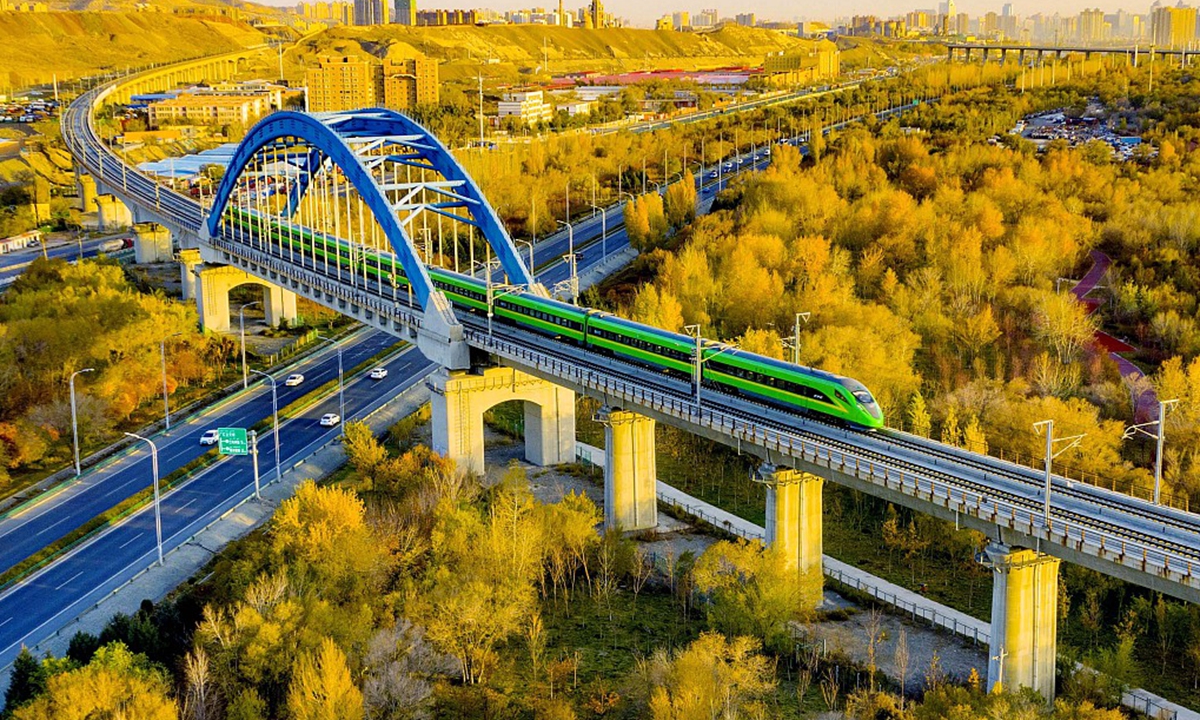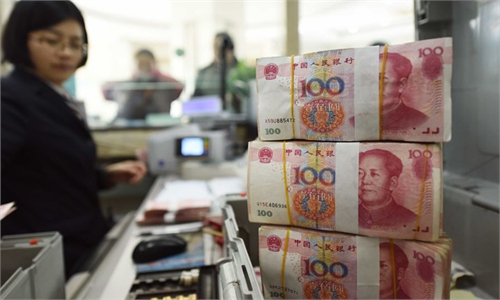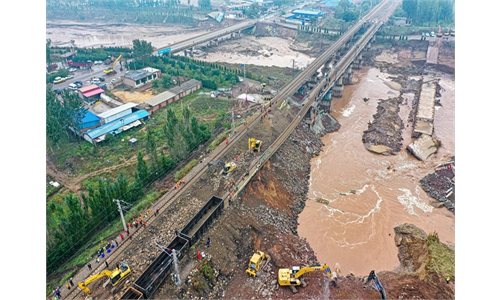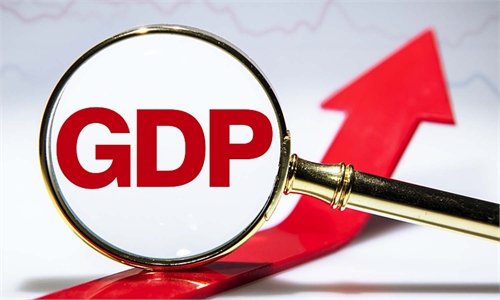China’s provincial GDP growth rates signal steady recovery, challenges
Figures point to steady recovery, lingering challenges

GDP Photo:VCG
Local GDP growth paces in Chinese provinces showed a mixed performance in the first three quarters of 2021, with eight of the 23 provincial level economies that have released quarterly GDP figures expanding at speeds above the national average of 9.8 percent, though a series of challenges, including new COVID-19 outbreaks and heavy rains, constrained economic activities.
Despite varying degrees of expansion, analysts noted that the figures underscore economic growth that is increasingly powered by high technology and other emerging digital industries in addition to foreign trade, even though consumption was still subdued in the third quarter due to sporadic outbreaks of the Delta variant.
Central China's Hubei Province, which was hit hardest by the COVID-19 epidemic, expanded at the fastest pace in the first three quarters, with a pace of 18.7 percent. South China's Hainan Province and the capital Beijing were in second and third positions, with growth rates of 12.8 percent and 10.7 percent, respectively.
Other provinces that outperformed the national standard included North China's Shanxi Province, East China's Jiangsu, Anhui and Jiangxi provinces, and Southwest China's Chongqing Municipality.
The economy of Northwest China's Qinghai Province grew the slowest in the first three quarters at just 6.7 percent. Central China's Henan Province, which was battered by catastrophic heavy rain in September, saw a GDP growth rate of 7.1 percent during the same period.
In the first nine months, China's economy grew by 9.8 percent to hit a total of 82.31 trillion yuan ($12.8 trillion), according to data released by the National Bureau of Statistics.
In terms of volume, South China's Guangdong Province, known as the country's manufacturing base and export engine, championed with a GDP of 8.8 trillion yuan in the first three quarters. Jiangsu ranked second, with 8 trillion yuan in GDP.
"Such growth bodes well, highlighting sound and stable fundamentals that will underpin the economy to grow at a normal range this year," Hu Qimu, chief research fellow at the Sinosteel Economic Research Institute, told the Global Times on Sunday.
Omitting the base effect, most provinces that delivered strong economic results in the first nine months are those where the digital economy and high-tech industries are well developed and have become important pillars of the economy, according to Hu.
Also, the backflow of export orders against the backdrop of the COVID-19 pandemic gave provinces that are export-oriented, such as Guangdong and Jiangsu, a lift.
However, Tian Yun, former vice director of the Beijing Economic Operation Association, told the Global Times on Sunday that the GDP growth figures, despite their geographic divergences, also reflect the gloomy fact that the resurgence of coronavirus outbreaks has continued to cast a shadow on China's consumption rebound.
Electricity shortages also weighed on some major manufacturing bases, and their GDP growth rates may have been higher otherwise, analysts said.
What's more pressing is a widening divide between the economic growth rates of southern and northern provinces, which may further widen in the fourth quarter as recent COVID-19 cases have been largely reported in North China, according to analysts.
The new outbreaks are expanding fast since October 17, and affected 11 provinces within one week, China's top health authority said on Sunday. As most COVID-19 infections are related to cross-region tourism, there are growing risks of further spread, according to the authority.
Dozens of cities in North China, such as Lanzhou in Northwest China's Gansu Province and Hohhot in North China's Inner Mongolia Autonomous Region, have temporarily closed down entertainment and tourism sites, which analysts said would deal a further blow to those northern regions' production and consumption.
"Fourth-quarter GDP growth rates in northern regions that were hit by the latest outbreaks could be constrained, except for provinces like Henan, which is on a trajectory to a steady recovery from the heavy rainfall," Hu said.
Analysts expect China's GDP to grow 4.3-4.5 percent in the last three months, allowing full-year growth to land above the annual target of 6 percent or more.
"It is likely that the third and fourth quarters could be a period where China's economy 'bottoms out' and gradually stabilizes. The first quarter of next year could be another climbing-up period," Tian said.




